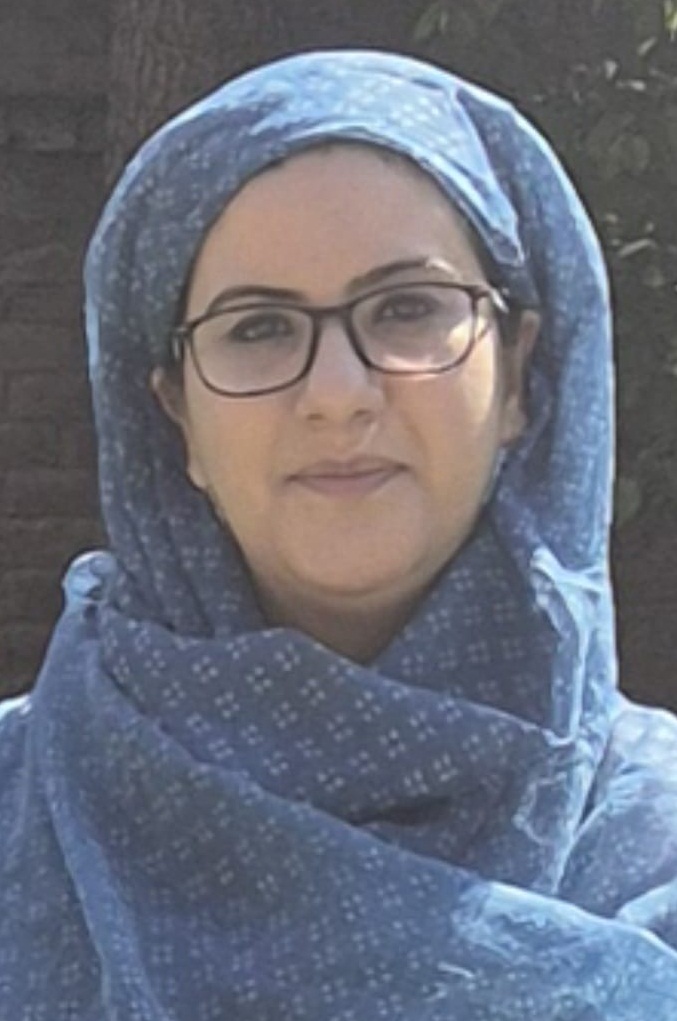INHERITING IMAGINATION
Introducing the Dilemma
One of the most pertinent questions or dilemmas facing parents in the present generation is whether or not Kashmiri language should be introduced to their children? The question is ironic as well as tragic because there should be no choice when it comes to exposure to one’s mother language. Yet, parents make an explicit choice by introducing Urdu and/ or English to their children.
Kashmiri is an official language in the UT of Jammu and Kashmir, alongside Dogri, Hindi, Urdu and English. It’s also one of the 22 scheduled languages of India. It is also a well-known fact that most parents shy away from introducing the Kashmiri language to their children. The shame and taboo we associate with our mother tongue is a phenomenon that has deep roots in social, economic, and psychological complexes.
The usage of Kashmiri is closely linked to social stratification where a certain class speaks a certain language. The pride and elitism associated with English and Urdu is also a manifestation of a firmly entrenched sense of inferiority. By dissuading the usage of Kashmiri with our children, we greatly impair their acquisition of the native tongue.
We teach our children languages other than Kashmiri, such as English and Urdu where our competence has serious limitations. On the other hand, all of us as native speakers have sufficient competence as far as the Kashmiri language is concerned. The ‘Urdu’ that we teach our children is just a heavily accented language (Read Mother Tongue Influence), with children being its average speakers with sparse vocabulary and below-average orthography.
The exposure to native speech is natural as a child grows; the speech and sounds that surround him are absorbed. By dissuading the learning and speaking of the Kashmiri language we are at a high risk of adding more to a generation of speakers who are at a loss when a connection is needed with the art, culture, ideology, language, folklore, and literature of their place of birth.
In the context of colonial studies, the stalwart of African Literature Ngugi wa Thiong’o who recently passed away made an important link between the native language and our conceptualization of the world. In ‘Decolonizing the Mind: The Politics of Language in African Literature’, Ngugi talks about an ambivalent attitude that creeps in when the language of our thoughts and speech is not the language of everyday life.
V S Naipaul in his book ‘The Enigma of Arrival’ comments on this disjointedness of experience that is directly linked with the inadequacy of the second language learned. Though, Naipaul speaks as a colonial subject and English has long ceased to be the language of the colonizer. He speaks about his experience as he learned to identify flowers like jasmine and peonies only when he learned their names for the first time in London.
He had always seen these flowers back home in Trinidad throughout his childhood and the disjointedness of his experience is expressed: “I had never been able to put the name ‘peony’ to any of them; I had never been able to attach them to a season or a time of year or to the appearance of other flowers or to other natural events.” In the same vein, the question that we can ask is how many of our children who have read William Wordsworth’s “Daffodils” know that ‘Nargis’ and ‘Yaemberzal’ are flowers of their home too?
Social Reality
My personal experience of having studied in a Convent school where most of my classmates spoke in Urdu or English at home as well as in school has given me a first-hand experience of a generation of speakers who were deprived of the Kashmiri language.
Some of those who could speak the language well feigned a fake accent in public to show their inability with the language. In this curious case of speaking Kashmiri, incompetence with the language was a matter of pride and not the other way around.
As parents of the present generation, most of them are unable to communicate with their children in Kashmiri and private tutors are sought to teach Kashmiri to their children. I was amazed by a recent WhatsApp message in my alma mater group where mothers were seeking home tutors to help their kids with Kashmiri.
We have complicated the most basic of life skills that a normal child acquires breezily i.e., the acquisition of the native tongue. Imagine hiring a tutor for basic skills of a child–fine motor skills, gross motor skills, socio-emotional skills, and self-care. However, more disturbing than the hiring of a tutor is the nonchalant complacency and even an undertone of pride in it.
How to Learn our Mother Tongue?
The best way to learn any mother language is by exposing the child to its oral usage. Other languages can be learned through exposure as well as instruction, or even through tuition. In our scenario, the teaching of Kashmiri at schools is a highly commendable act that can to a huge extent save the damage that has already taken place.
However, it needs continuous exposure in real life so that Kashmiri doesn’t assume the status of “Mental Math” that many of my generation (including me) had to bear with. We need to aim at proficiency, not only in speaking but reading and writing of Kashmiri too, so that the great treasure trove of Kashmiri literature is laid bare for our coming generations. Many of us including the author herself can use the language colloquially but fail to access the language and its literature in its written form.
Theoretical Underpinnings
The three key features that help in the Language Acquisition Process are: Imitation and reinforcement (Learning Theory), Social Interaction (Interactionist theory) and Cognitive Development (Nativist theory) of the child. Children are multilingual by nature and it is our poverty of imagination that we curb their learning by making them speak only one language of our choice (mostly Urdu or English).
According to the Nativist theory of language acquisition, children have an amazing and innate ability to acquire languages. A child learns to use complex grammatical, syntactical and semantic structures while being blissfully unaware of the same.
Noam Chomsky posited the idea of a Language Acquisition Device (LAD) which is an innate capacity within human beings to acquire language. This theory demystifies the marvel of hearing children say unique sentences to which we thought they had no exposure. Another feature of his theory is the ‘Universal Grammar’ which makes this acquisition possible because all human languages are based on the same fundamental principles. It is like the rules of human languages are the same and out of a set number of rules humans can create infinite utterances.
According to the theory, the age from birth to eight or nine years is considered to be the most “critical period” to learn language/languages. Unfortunately, we stilt the growth by teaching children languages that we appropriate with social prestige and approval, at the cost of the mother language. The whole generation of children who are speaking in English right now might adjust better to the world outside but they are not going to thank us if they achieve intellectual awareness in life.
The Language Acquisition Device becomes attuned to using the languages that we learned in early childhood, making it difficult for them to learn new languages in future, if not impossible. Children who are kept away from their mother tongue will be at a loss when they want to acquire the language later in life.
On the other hand, if we introduce them with the mother tongue as well as any other language like Urdu and/or English, a child can acquire all of these without mixing the ‘Langue’ (abstract system of language). The individual speech acts (Parole) can indicate mixing. It is a marvel of the human mind that we should not underestimate.
The child may mix English and Urdu or Kashmiri and Urdu sometimes which is quite normal. Code-mixing which means the usage of linguistic elements from two or more languages: “Mama, meri help kardo” and code-switching which means the practice of shifting between two or more languages, dialects, or language varieties within a single conversation or interaction in a sentence such as “I will not cry agar mujhe ghar loge” are not aberrations of language usage but one of the most creative ways through which kids use language efficiently.
Research shows that in case of two languages used such utterances indicate bilingual competence. It is not a sign of confusion and as children grow they learn to differentiate between languages used. Parents or caregivers wrongly assume that languages can be introduced sequentially, first one and then the other. However, introducing languages simultaneously doesn’t hamper the child’s learning and acquisition.
In fact, it empowers them with more than one language system improving their cognitive development. I was amazed to see a child whose first language was Kashmiri, utter the sentence “me chun mael” (I don’t have the appetite) which could have not been possible to communicate in Urdu considering our competence in the language even as adults.
Language and Culture
Language is one of the most important components of culture. With the loss of language, we deprive children of the ethos of the language as well. Language helps in a deep awareness of culture, ethos as well as art.
Words like ‘mai’ (love), ‘aar yun’ (a feeling of deep empathy) and ‘loal’ (an intense yearning and longing out of love), ‘doi khair’ (good wishes or dua-e-khair), ‘taar lagyun’ (sailing through a difficult situation), and ‘halam bharun’ (a humble act of spreading one’s garment) are not only words and phrases but feelings and emotions that cannot be expressed in any other language because of the immediacy peculiar to them in the Kashmiri language.
My generation remembers gathering near our grandmother on winter nights doing ‘shaalpop’ (sharing the heat from the kangri) and listening to ‘Padshah Daleel’ (The King’s Tale). The tale was our first venture into the fields of imagination and there is a higher probability that each of us imagined a different king from the other. After all, the king wasn’t there on the screen in HD glaring at us. We had to construct our own king, queen and his story in our tiny little brains which were hard-wired to acquire language.
The art of storytelling is that each time it is told, it is reborn. Many of us were reborn with each telling of the same tale. Our mother tongue helped us connect with the older generation and imbibe their values of hospitality, generosity, and kindness. We could even eavesdrop on them praying for us on the prayer mat. We learned from them that we can talk to Allah (SWT) in this language, and we dreamed in it. More than the language of our dreams, the mother language is the language of our prayers, fears, and joys.
I found out that every person of my generation eventually learned English and Urdu but many of us failed to learn Kashmiri. Many of us remained poor for the rest of our lives. It is a poverty that we don’t want our coming generations to inherit.
We want to inherit this beautiful language and we need to trust them that learning the native language will not hamper their acquisition of other languages. They are smarter than us at the job of acquiring languages as psycho-linguists have arrived at the understanding that children are hard-wired to acquire language/s.
Leonard Bloom considered the acquisition of languages by a child the most commendable intellectual feats. We have to trust our children to acquire this feat without projecting our fears, insecurities and complexes onto them.
(The Author is Assistant Professor and Head; Department of English at SMS GDC Hyderpora)








